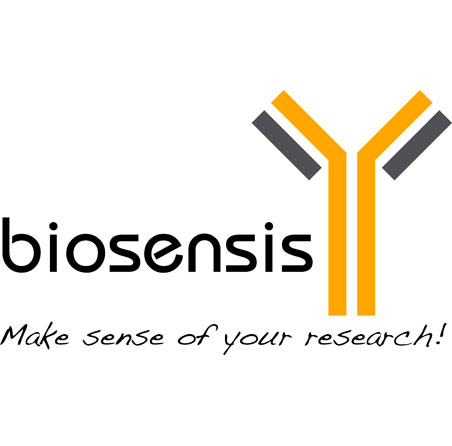Enhanced green fluorescent Purified Protein (EGFP), Purified Recombinant Protein
Only %1 left
Catalog Number
PE-002
Discontinued
- Product Name Enhanced green fluorescent Purified Protein (EGFP), Purified Recombinant Protein
- Product Description Enhanced green fluorescent Purified Protein (EGFP), Purified Recombinant Protein, suitable for WB.
- Alternative Names Enhanced Green Fluorescent Protein
- Application(s) WB
- Purity Description ~92% by SDS-PAGE
- Purity % > 90%
- Regulatory Status For research use only.
Product Info
- Product Description Enhanced green fluorescent Purified Protein (EGFP), Purified Recombinant Protein, suitable for WB.
-
Related Products
Green Fluorescent Protein Tag (GFP), Chicken Polyclonal Antibody
Green Fluorescent Protein Tag (GFP), Goat Polyclonal Antibody
Green Fluorescent Protein Tag (GFP), Mouse Monoclonal Antibody
Green fluorescent protein (GFP), Rabbit Polyclonal Antibody
- Application(s) WB
- Target Enhanced green fluorescent protein (EGFP)
- Target Host Species Jellyfish
- Antigen Produced In E. coli
- Sequence Histidine-V5 epitope fused to EGFP MRGSHHHHHHGMASMTGGQQMGRDLYDDDDKDHPFTVSKGEELFTGVVPILVELDGDVNGHKFSVSGEGEGDATYGKLTLKMVLLEFVTAAGITLGMDELYK
- Purity Description ~92% by SDS-PAGE
- Purity % > 90%
- Format Lyophilized
- Reconstitution Instructions Reconstitute in 100 µL of sterile water. Centrifuge to remove any insoluble material.
- Storage Instructions After reconstitution, aliquot and keep at -20°C for long-term storage; for short term keep at 2-8°C.
- Batch Number Please see item label.
- Expiration Date 12 months after date of receipt (unopened vial).
- Alternative Names Enhanced Green Fluorescent Protein
- Uniprot Number P42212
- Uniprot Number/Name P42212 (GFP_AEQVI)
- Scientific Background FUNCTION: Energy-transfer acceptor. Its role is to transduce the blue chemiluminescence of the protein aequorin into green fluorescent light by energy transfer. Fluoresces in vivo upon receiving energy from the Ca(2+)-activated photoprotein aequorin. BIOPHYSICOCHEMICAL PROPERTIES: Excitation max (nm): 488; Emission max (nm): 509; Extinction coefficient (Cm-1M-1): 61000. SUBUNIT: Monomer. TISSUE SPECIFICITY: Photocytes. PTM: Contains a chromophore consisting of modified amino acid residues. The chromophore is formed by autocatalytic backbone condensation between Xaa-N and Gly-(N+2), and oxidation of Tyr-(N+1) to didehydrotyrosine. Maturation of the chromophore requires nothing other than molecular oxygen. BIOTECHNOLOGY: Fluorescent proteins have become a useful and ubiquitous tool for making chimeric proteins, where they function as a fluorescent protein tag. Typically they tolerate N- and C-terminal fusion to a broad variety of proteins. They have been expressed in most known cell types and are used as a noninvasive fluorescent marker in living cells and organisms. They enable a wide range of applications where they have functioned as a cell lineage tracer, reporter of gene expression, or as a measure of protein-protein interactions. SIMILARITY: Belongs to the GFP family.
- Shipping Temperature 25°C (ambient)
- UNSPSC CODE 12352202
- Regulatory Status For research use only.
Specifications
-
Specific References
Caschera F et al (2011) Coping with complexity: machine learning optimization of cell-free protein synthesis. Biotechnol Bioeng. 2011 Sep;108(9):2218-28.
- General References Chalfie, M., Tu, Y. et al (1994) Science 263, 802-805

 1800 605-5127
1800 605-5127 +61 (0)8 8352 7711
+61 (0)8 8352 7711
